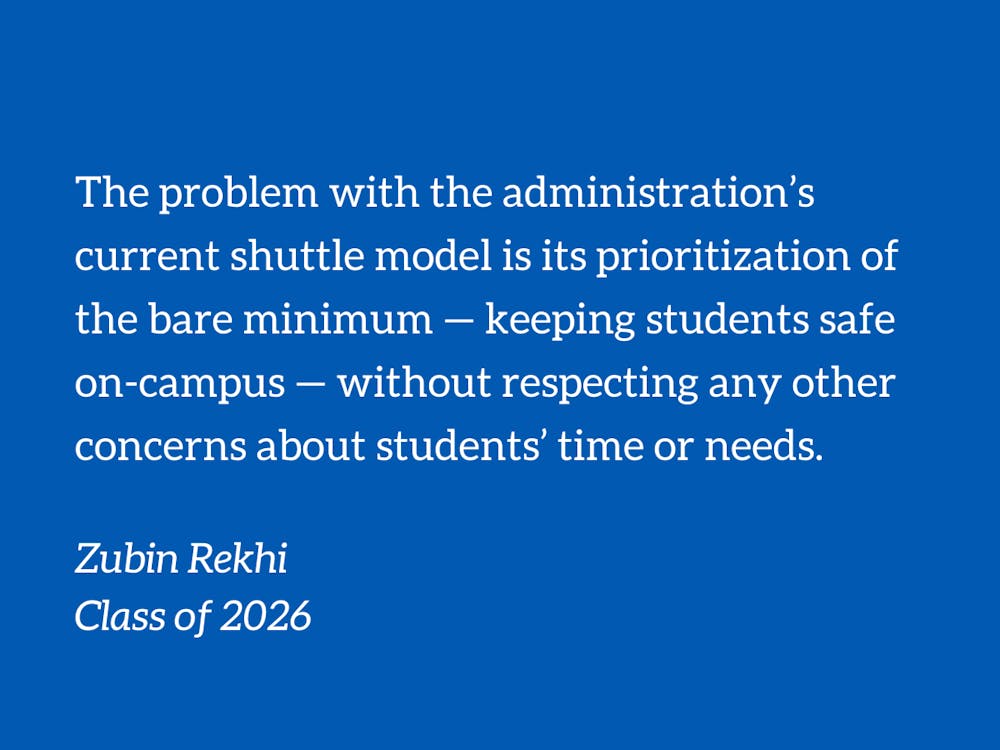A few weeks into the semester, I was missing the simple, affordable and soul-satisfying meal of sunny-side eggs and a refreshingly cold glass of milk that I prepared for myself everyday before work in summer. The meal was as cheap as it was simple, and I enjoyed the satisfaction of cooking it. So, in search of a carton of eggs and milk, I went to the West campus convenience store — only to realize that there weren’t any there. I was out of luck and didn’t have the time to take the C1 and then trek 10 minutes to Harris Teeter or Whole Foods. The cooking had to wait.
The food on this campus is absurdly expensive, even compared to basically all comparable schools. But, while ruminating on methods for cost-cutting, I was struck by how far students need to go to buy basic ingredients for simple foods they might want to cook in their dorm s. After all, aren’t foodstuffs like Wonder Bread, a carton of milk, a carton of eggs, and cereal college student staples? Apparently not, according to the administration's current approach to expanding dining options.
The issue is larger than just expanding the set of snacks sold at the Duke Store or at Bella Union. On campus, students’ only means of getting to a proper supermarket is borrowing a friend’s car or waiting for a delay-prone shuttle, and having to struggle for basic groceries and amenities can only be expected.
With the substantial time commitment and bandwidth students must invest to get basic groceries, it makes sense that concerns over high food prices at dining halls and rationing food points loom as large as they do at Duke for many students. If students could substitute their $12 latte and chocolate croissant, with the more economical (and might I add, delicious) option of a “homemade” peanut-butter and jelly sandwich, I am sure that many would.
Additionally, considering West Union, the main dining hall, closes at the relatively early hour of 9 p.m., it’s imperative that students have access to healthier and more varied options than McDonald’s, Pitchforks or vending machines after that hour. Better access to groceries would solve this problem: If students can get their hands on basic ingredients (like peanut butter) for making a midnight sandwich, they wouldn’t have to eat McDonald’s.
The solution to this problem is simple: I propose a direct shuttle that frequently goes directly to Harris Teeter and back. Currently, shuttles only relay students between East and West Campus, leaving the responsibility of efficiently transporting students from off-campus locations to West Campus unfulfilled. Duke Vans only provide a similar service within a limited boundary. Current policy’s explicit goal is only to bring students safely back to their residence halls after-hours, not to improve student convenience by making their shopping or dining trips any easier during the day. In a particularly car-centric part of the South, providing students with no shuttle alternative amounts to denying students without cars access to basic amenities and groceries and conditioning their ability to acquire such necessities on the likelihood that a friend or an acquaintance with lend them their car. After all, walking from Whole Foods — the less affordable but closer alternative to Harris Teeter — to the East Campus bus stop while lugging groceries with friends in the baking summer heat or bitter winter cold is a frustrating experience.
Students deserve better.
The problem with the administration’s current shuttle model is its prioritization of the bare minimum — keeping students safe on-campus — without respecting any other concerns about students’ time or needs. By expanding the shuttle service to a department store, the administration would take care of manifold problems instantly, opening the door for easier food budgeting and expanded late-night food options for students who don’t have the bandwidth to surmount the current barriers to going shopping.
Zubin Rekhi is a Trinity sophomore. His column typically runs on alternate Fridays.
Get The Chronicle straight to your inbox
Signup for our weekly newsletter. Cancel at any time.

